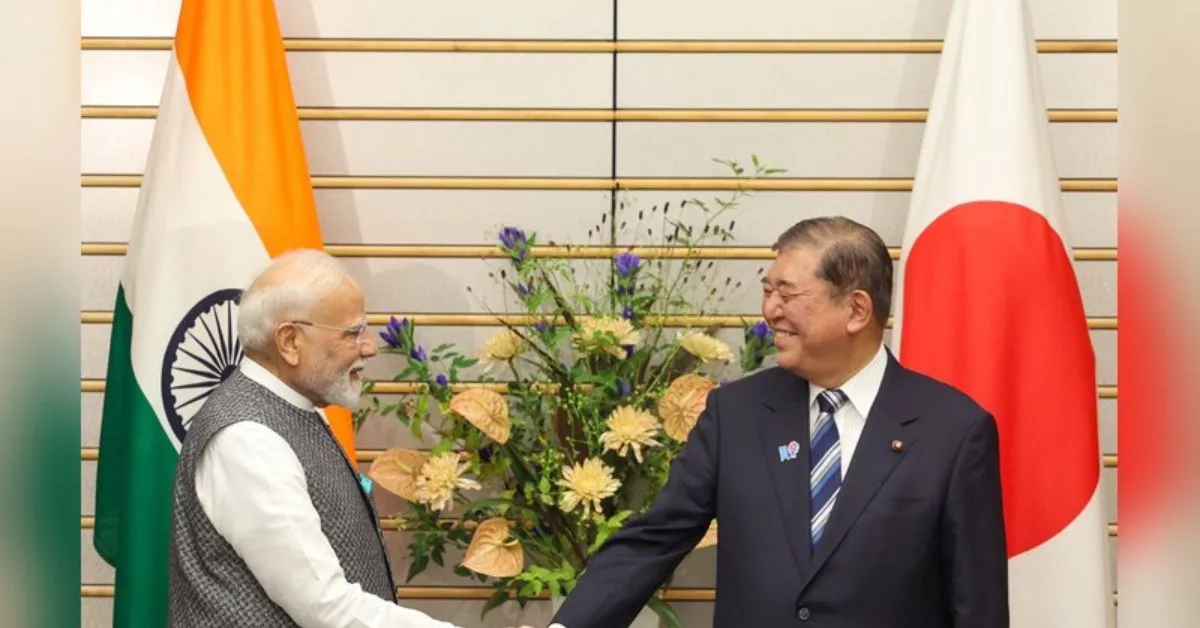In a significant move highlighting the growing collaboration between India and Japan, Prime Minister Narendra Modi recently emphasized the synergy between Japanese technological innovation and Indian human talent during his visit to Tokyo. The statement reflects not only the ongoing deepening of bilateral ties but also underscores the potential for a transformative partnership that could shape the future of global technology and innovation.
Strengthening Bilateral Relations
India and Japan have shared a longstanding relationship built on mutual trust, economic cooperation, and cultural exchange. Over the years, this partnership has expanded beyond traditional diplomacy into areas such as infrastructure development, investment, and high-end technology collaborations. Prime Minister Modi’s visit to Tokyo further reinforces the commitment to leveraging these strengths to address global challenges and promote sustainable growth.
Speaking at a joint forum with Japanese business leaders, PM Modi highlighted India’s demographic advantage, its large pool of skilled professionals, and a rapidly growing digital ecosystem. He pointed out that while Japan leads in advanced manufacturing, robotics, and precision engineering, India offers a robust talent pool, particularly in software development, artificial intelligence, and research-driven innovation. This combination, he argued, could drive not only bilateral growth but also contribute to global technological progress.
The Technology-Talent Synergy
Japanese companies are renowned for their meticulous approach to product quality, efficiency, and technological excellence. On the other hand, India has become synonymous with IT services, software development, and a culture of entrepreneurial innovation. By combining Japanese technology with Indian talent, both countries can achieve outcomes that neither could accomplish alone.
For example, Japanese firms investing in India can tap into highly skilled software engineers to optimize processes, develop AI applications, and enhance digital solutions. Similarly, Indian startups and technology professionals gain access to Japanese research, advanced machinery, and expertise in hardware development. This two-way collaboration enables faster innovation cycles, reduces costs, and ensures that solutions are adaptable for global markets.
Economic Implications
The partnership between Japanese tech companies and Indian professionals is expected to have substantial economic implications. Japan has historically been one of the largest investors in India, with significant capital flowing into sectors such as manufacturing, automotive, and renewable energy. The emphasis on technology collaboration opens new avenues for investment in research and development, digital infrastructure, and skill development programs.
Moreover, this partnership aligns with India’s vision of becoming a global innovation hub. By integrating Japanese precision technology with India’s talent-driven ecosystem, Indian industries can upgrade manufacturing standards, enhance productivity, and become competitive in high-value sectors such as semiconductor manufacturing, electric vehicles, and robotics.
Education and Skill Development
A crucial aspect of this collaboration lies in education and skill development. Prime Minister Modi stressed the importance of training Indian professionals to work alongside advanced Japanese machinery and technologies. Collaborative initiatives such as exchange programs, joint research projects, and specialized training centers could help bridge knowledge gaps and foster a culture of continuous learning.
In addition, this partnership can encourage Japanese companies to invest in Indian educational institutions, providing access to global standards of technical training. This approach not only enhances workforce readiness but also ensures that Indian professionals are equipped to contribute to cutting-edge technological advancements.
Global Competitiveness
The convergence of Japanese tech and Indian talent is not just a bilateral win; it has implications for global competitiveness. In an era where nations compete on innovation, countries that can combine strong technological infrastructure with a skilled workforce hold a strategic advantage.
By showcasing this model of collaboration, India and Japan can set an example for other countries seeking mutually beneficial partnerships. Their approach demonstrates that leveraging complementary strengths Japan’s technology and India’s talent can lead to sustainable economic growth, increased innovation, and improved global competitiveness.
Addressing Challenges
While the partnership holds immense potential, it is not without challenges. Differences in corporate culture, work ethics, and management styles may pose initial hurdles. Japanese companies often prioritize precision, hierarchy, and long-term planning, while Indian workplaces tend to value agility, adaptability, and entrepreneurial thinking.
However, these differences can become strengths when managed effectively. Cross-cultural training, open communication, and collaborative project frameworks can help both sides learn from each other, ultimately creating a hybrid model of efficiency and innovation. PM Modi’s visit emphasized this point, noting that collaboration requires understanding, respect, and a shared vision for growth.
Future Prospects
Looking ahead, the collaboration between Japanese technology and Indian talent could redefine sectors such as artificial intelligence, robotics, digital infrastructure, and green technologies. For instance, joint initiatives in renewable energy solutions could address climate change while creating new business opportunities. Similarly, in areas like smart cities and intelligent transportation, combining Japanese hardware expertise with Indian software skills could deliver scalable, cost-effective solutions.
Prime Minister Modi’s visit to Tokyo signifies a strong commitment to this vision. By promoting dialogue between business leaders, policymakers, and innovators, both countries are laying the foundation for a long-term, mutually beneficial relationship. The focus on technology-talent synergy ensures that the benefits of this partnership extend beyond immediate economic gains, fostering innovation that addresses global challenges.
Conclusion
The message from Tokyo is clear: Japanese technology and Indian talent are a winning combination. By combining Japan’s innovation and precision with India’s skilled workforce and digital capabilities, both countries stand to gain economically, technologically, and strategically. This collaboration reflects a forward-looking approach to global partnerships one that values complementary strengths, promotes knowledge exchange, and encourages joint innovation.
As India continues to grow as a hub of skilled professionals and Japan maintains its position as a leader in advanced technology, the possibilities for collaboration are virtually limitless. Prime Minister Modi’s statements in Tokyo underscore the potential of this synergy, signaling a new era of India-Japan cooperation that could shape the future of technology, business, and innovation worldwide.

